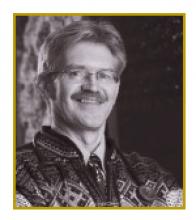To commemorate The Journal of Family Practice’s 40th anniversary, JFP invited readers to tell us about the patient who changed the way you practice family medicine. We received numerous entries describing a variety of patients, from those who prompted the physician to confront his or her own biases and insecurities to patients whose circumstances reminded doctors why they became physicians in the first place.
With so many excellent entries, determining which ones to publish was a difficult task. “All of the entries were great stories, teaching a number of lessons,” said JFP Editor-in-Chief John Hickner, MD, MSc, who served as one of the judges.
There was the doctor who learned about patience, compassion, and perseverance while caring for a 480 gm full-term infant whose mother smoked and abused cocaine and alcohol during her pregnancy. Another family physician (FP) described the day he learned the importance of always asking patients about the reason for their visit; on this particular day, he mistakenly performed a Pap smear on a patient who came in to the office for a hepatitis shot.
Another physician described witnessing a husband’s poignant goodbye to his dying wife in the hospital and making the decision to change her residency from dermatology to oncology. There was even a doctor who foiled the kidnapping of one of his patients, a 5-yearold girl who told him in the emergency department (ED) that the man she’d just been in a one-car accident with was “not her Daddy.”
Who was he?
She didn’t know, as he’d just taken her from her house.
Two doctors wrote about the importance of listening to—rather than overriding—that “inner voice” that tells you the proper course of action. One physician wrote about the months of unnecessary worry and invasive testing she’d set into motion because she wasn’t confident enough to stand by her own assessment that a patient’s chest pain actually was caused by anxiety.
Another physician described caring for a 5-year-old girl with an earache and malaise. “No specific findings and a normal blood count should have been reassuring,” he noted, “but a little voice … said ‘something’s not right here.’ ” He overrode that “voice” and sent the young patient home. The next morning she was rushed back to the ED in full blown Waterhouse-Friderichsen syndrome. The child survived, but “ended up losing half of her extremities.”
So many poignant stories…
In the end, the judges selected the 3 entries they felt best captured the essence of the contest. First-place winner Jon Temte, MD, PhD, wrote about what he learned from caring for a patient plagued by pain, addiction, and mental illness.
“Dr. Temte has proven that a true clinician can serve the most desperate members of our society with dignity, grace, and respect,” said JFP Editorial Board member Jeffrey R. Unger, MD, who also judged the contest. “If only one could provide an encounter code for ‘compassion’ …”
Second-place winner Luis Perez, DO, described how he learned to set aside his prejudices by really listening to a “frequent flier” patient who insisted that he “do something” for her. Dr. Perez’s decision to check his patient one more time led to a discovery that saved the patient’s life.
And third-place winner Pamela Levine, MD, wrote about an encounter with a drug-seeking patient who later wrote to thank her for saying ‘No,’ and prompting the woman to get the help she needed.
We’re confident that each of these stories will touch you as they did us. We also believe that these stories will remind you of the gratifying and beautifully imperfect art that is family medicine.
[First-Place Winner]
A housefly, an earwig, a click beetle, and a toad
Jon Temte, MD, PhD
University of Wisconsin School of Medicine and Public Health, Madison
Alice was not attractive in any sense of the word. In fact, she was the antithesis of attractive. She had a broken carapace, arched by osteoporosis, pegged and spindled teeth (the familiar product of the years’ accumulation of addiction), and matted and greasy, grey-blackened hair, with ample holes. To Alice, I was never Dr. Temte, or Dr. Anybody, or anyone resembling anything official, just “Jon-Jon.” I was equally dismissive and somewhat rude in a playful way. “Alice,” I’d say, “Halloween was 2 weeks ago. You’re scaring the little kids.” She’d look up at me, and with a twinkle in her eye, say “Boo!”
I had inherited her from a colleague, who had fired her from the practice many months before. But Alice had managed to take advantage of our lax system of keeping the outcasts cast away, and returned in the manner of a fed stray cat. By the time of her reinstatement, she had graduated to methadone, was racked with chronic pain, and smoldered hepatitis C. She was one of my new pain patients, part of diaspora that move to a new practitioner (with plenty of open slots) who is temporarily free from a jaded, jaundiced view of medicine.



